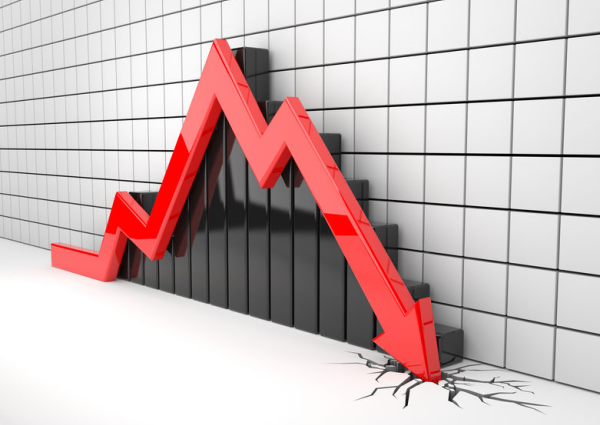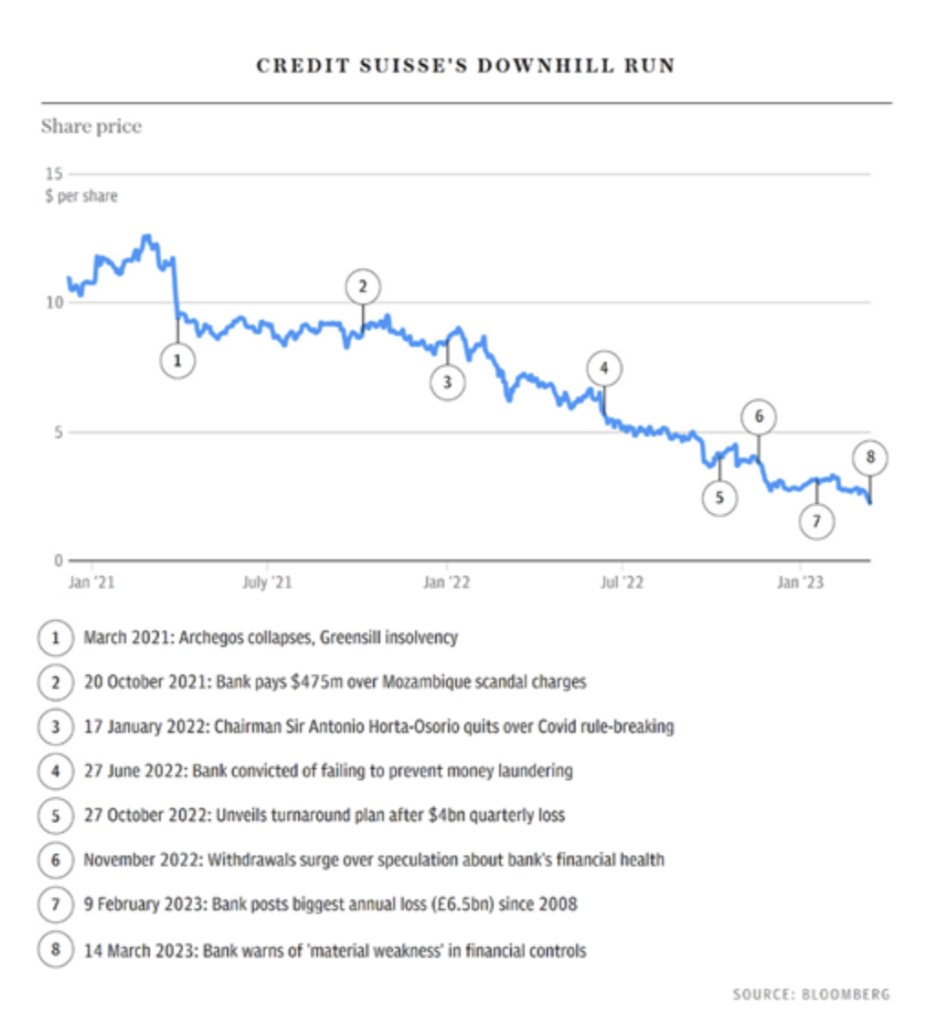The slow, then sudden, collapse of Credit Suisse (CS) put a lot of large asset management company money at risk.
But as an individual investor, you may think you’re not affected by the failure of a Swiss bank now being acquired by another Swiss bank.
Unfortunately, a handful of popular investment products could go down the drain along with Credit Suisse.
Here’s how to see if your investments are at risk…

My friend and fine wine investing account manager, Suthagar McNamara-Rajeswaran of Oeno Group, sends a daily email that recaps political and financial news. He recently included this chart in one of his daily notes:

The Swiss bank has suffered (self-inflicted) a string of crises, which will soon culminate in the bank’s end as a separate entity. Investors who bought common stock or Credit Suisse bonds face losses of 100%—or nearly that. Last week it was announced the bank would completely write off $17.3 billion of outstanding bonds to increase core capital. These bonds were owned by companies like Pacific Investment Management Co. and Invesco Ltd.
Credit Suisse also manages some retail products that put investor money at risk. Three popular covered call strategy funds are more dangerous than they look. Here is the list:
- Credit Suisse Gold Shares Covered Call ETN (GLDI)
- Credit Suisse Silver Shares Covered Call ETN (SLV)
- Credit Suisse Crude Oil Shares Covered Call ETN (USOI)
These funds give investors exposure to the specified commodities and pay spectacular yields from the covered call strategy. SLVO was a recommended investment for my Dividend Hunter subscribers from February 2021 until March 2022. At that time, I decided the risks from these funds were too great.
The three funds are organized as exchange traded notes (ETNs). An ETN is an unsecured debt obligation of the issues that will generate returns to match the designated investment strategy. Note the term “unsecured debt obligation.” This fact means that an issuer of an ETN can default and pay little or nothing to investors. Charles Schwab gives this example:
At the time of its bankruptcy in September 2008, Lehman Brothers had 3 ETNs outstanding. While many investors sold these ETNs prior to Lehman’s collapse (only $14.5 million remained in the 3 ETNs when the firm folded), investors who didn’t get out received just pennies on the dollar.
There are many unknown risks in investing. We don’t want to take risks that are staring us in the face. The collapse of Credit Suisse puts investor money in GLDI, SLVO, and USOI very much at risk.





